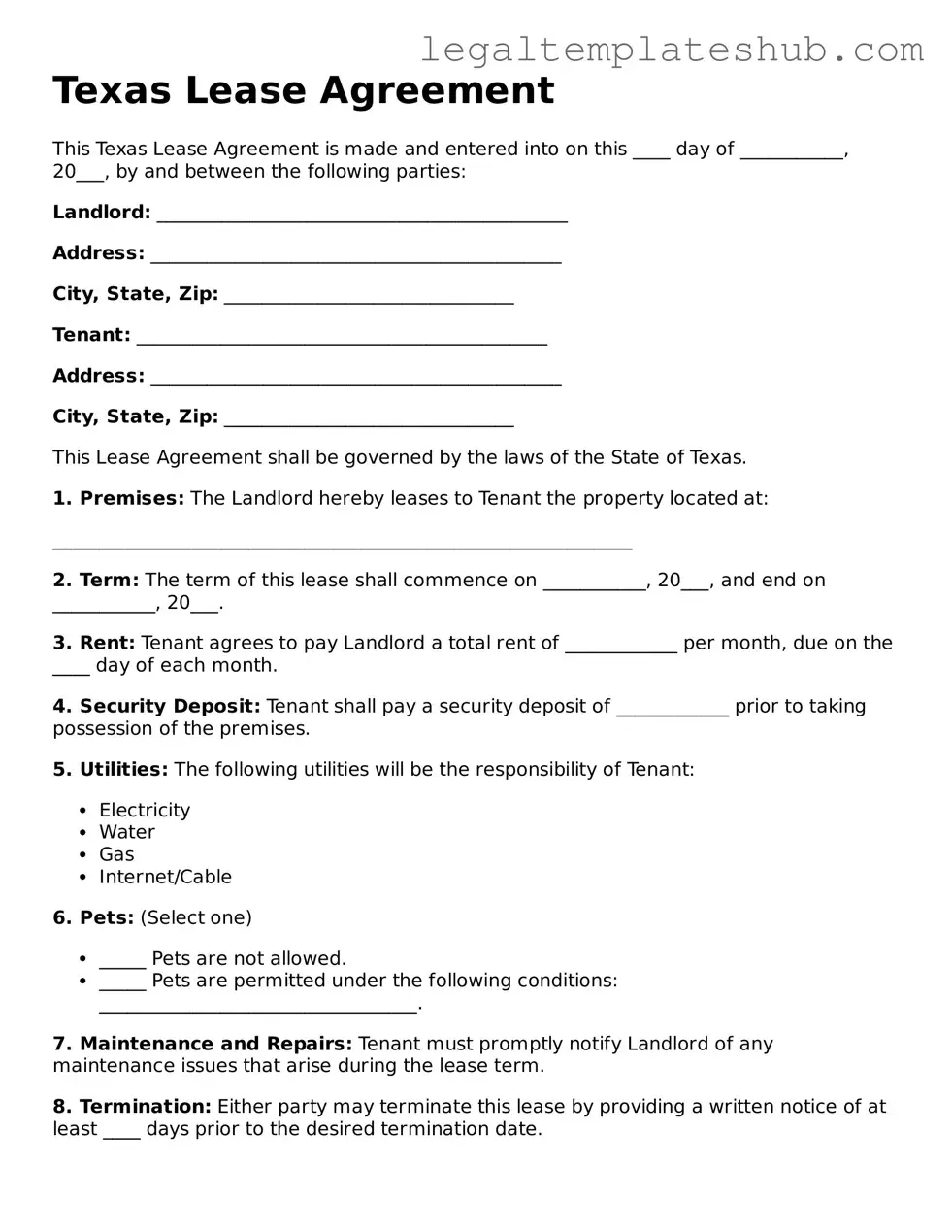Printable Lease Agreement Document for Texas
A Texas Lease Agreement form is a legal document that outlines the terms and conditions between a landlord and a tenant regarding the rental of property. This form serves as a crucial tool in ensuring both parties understand their rights and responsibilities. If you're ready to secure your rental agreement, fill out the form by clicking the button below.
Access Editor
